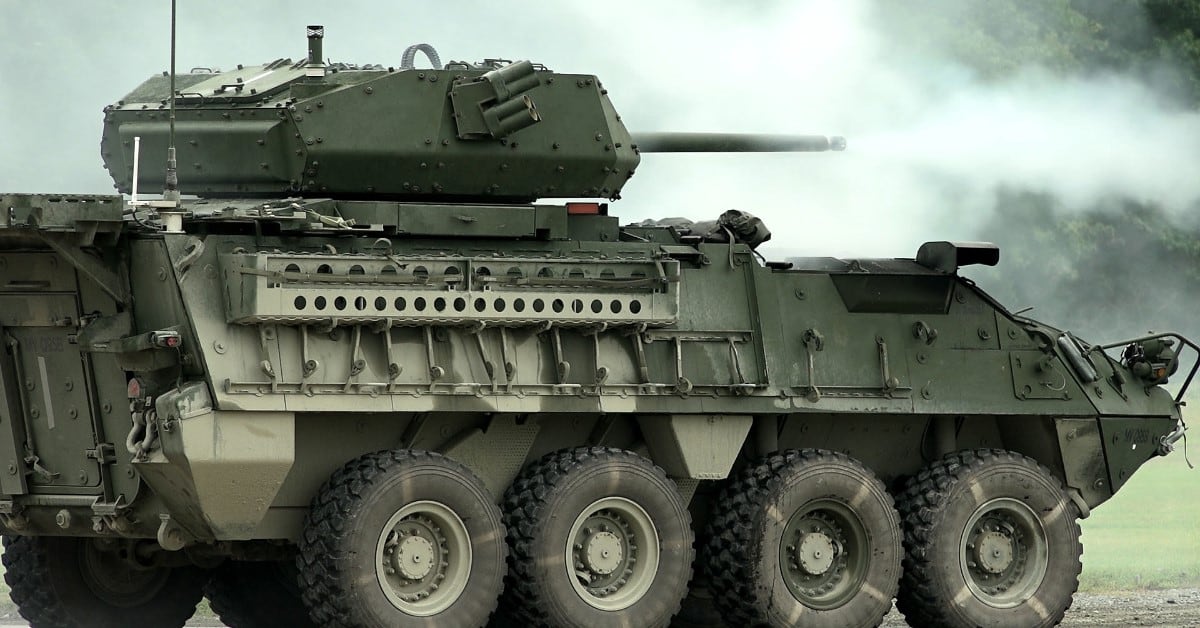Pilots and aircrew have had access to helmet-mounted displays for years. And soon, so too will ground troops.
Israel-based defense firm Elbit Systems is one company looking to build that capability with its IronVision display setup.
IronVision affords armor crewmen, or troops inside an infantry fighting vehicle, the luxury of staying safe and secure within their vehicle’s protective armor, while still receiving real-time, zero-latency, high-resolution video of the outside.
The display’s feed is natural, bi-ocular, colored and able to move between day and night vision. The operator can toggle between video feeds from their own weapon sights, other vehicle’s vantage points, a tactical operation center, drone feeds and even aircraft.
“The commander, the driver, the gunner, anybody from the crew, can have right in front of their eyes the integrated picture of the outside,” Raanan Horowitz, the president and CEO of Elbit Systems of America, told Army Times.
The number of sensors an armor crew wants to put on the outside of their vehicle is up to them, Horowitz said.
“For example, when we did the integration of the Stryker, we used existing sensors that the [U.S.] Army put on the vehicle," Horowitz said. "In the first integration there were three, [but] they actually desired to put six sensors around the vehicle.”
IronVision is an “open system,” so users can easily integrate other sensors into it, Horowitz added.
Different sensors would allow for different threat detection capabilities, varying ranges and flexible costs.
RELATED

IronVision has finished detail testing with the Israeli Defense Force and is under contract negotiations, but has not yet been deployed in large numbers, according to Horowitz.
Meanwhile, the U.S. Army has also shown an interest in the system, but the service is still evolving its desired specifications, Horowitz said.
“There are potentially some urgent requirements around the Stryker, just because of the Stryker up-gunning, and the obscuration that is happening there," Horowitz said.
The upgraded Stryker Infantry Carrier Vehicle-Dragoon arrived in Germany late last year to fulfill an urgent needs request from the U.S. Army’s 2nd Cavalry Regiment. A remote-operated 30mm cannon was mounted on the Strykers to replace their older M2 .50 caliber machine guns.
But beyond that, “there’s still a debate within the Army of how much you want to fight under closed hatches, versus outside,” he said.
“From an Israeli perspective, one of their lessons learned, especially in dense urban environments when you have threats from 360 degrees and higher elevations, you have to be under closed hatches,” Horowitz said.
But when armor moves into more open terrain, the dynamics change a bit, he added.
That debate is driving what Elbit wants IronVision to offer. Rather than simply being a system designed to provide situational awareness, it will ultimately provide threat detection for vehicle crews.
As an example, IronVision is being built to alert crew whether their vehicle is being targeted. If a laser locks onto a Stryker, possibly to sight in the range or provide terminal guidance for a weapon system, the display would be able to alert its operator of the incoming danger.
“So you have sensors that are laser warning systems, and those sensors need to be piped into the commander or crew to send them an alert," Horowitz said. "So it’s not just the threat detection of a type of vehicle, but whether this vehicle is targeting you.”
For more coverage from the AUSA annual meeting, click here.
Kyle Rempfer was an editor and reporter who has covered combat operations, criminal cases, foreign military assistance and training accidents. Before entering journalism, Kyle served in U.S. Air Force Special Tactics and deployed in 2014 to Paktika Province, Afghanistan, and Baghdad, Iraq.
